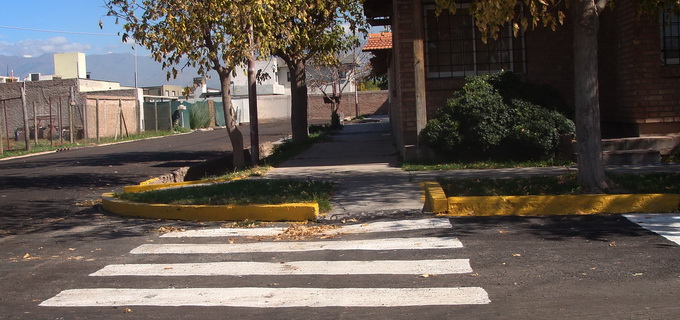9- Las Cañas
The East Access Avenue constitutes the entrance to the metropolitan area, and is part of the Bio oceanic Corridor. The South Access Avenue is the interdepartmental road. Its main communication roads are Adolfo Calle and Elpidio González. The secondary are Las Cañas and Estrada.
History: La Cañadita Alegre was formerly a small gorge through which the water from the rain used to go down. The Mendocino author Isidro Maza described it as “happy” referring to the brightened up familiar meetings with music, singing and dancing. In La Cañadita there used to be two comfortable houses: one of a gentleman called “el negro Aguilar” and the other of the “Chilean” Cuadros, where there used to be present good musicians and singers. Among them there was the teacher of many Mendocinean guitar players, el negro Ferreyra; Don Diogenes Caballero, Homero Saldaña Molina – who used to play the piano admirably; Dante Pelaia – author of the tune “Claveles Mendocinos”. In addition, there was Julio Quintanilla – a poet of recognized trajectory and the duet Cuadros-Morales that made beautiful cuecas, zambas and songs like the “Sesenta Granaderos”, “Flor de Guaymallén”, “La Movidita”, “Virgen de la Carrodilla”, and others. Friends and admirers of Hilario Cuadros built a bust to remember the singer of the Cañadita. By the decree 1985/85, a new geographic ordering for the department and this sector was called “Las Cañas”.
10-San Francisco del Monte
It is limited in the north by the streets Elpidio González, Gutiérrez, Castro, Estrada, Azcuénaga, and F.Villanueva, in the east by Curupayti Street, in the south by San Francisco del Monte Street, and in the west by the South Access Avenue.
With an area of 4.14 square kilometres and a population of 6167 inhabitants, its population density is 1490 inhabitants per square kilometre.
There are two schools; however, there are no police station or department, hospital or health centres.
Since the 80s important residential nuclei have been developed – “private neighbourhoods” that have driven to the raise of the prices of lands in this zone.
As an inter-departmental communication route, there is the Urquiza Street, as the main roads: San Francisco del Monte, Elpidio González Gutiérrez, Las Cañas, Azcuénaga, Curupayti, and Estrada. As a secondary road: Castro Street.
History: This is one of the oldest territories of the department. It was one of the first places occupied by the Spaniards, along with San José. Sixty years before the foundation of Villa Nueva, in San Francisco del Monte magnificent mansions were being built with a very well defined construction style, near the irrigation channels. This was an important population center for the time; it was sufficiently far from the city of Mendoza to offer a space of discretion and tranquillity. This situation was taken advantage of by the persecuted ones that found in these lands an asylum against the oppression, a refuge that would keep them safe from the confrontations between Unitarians and Federals. In San Francisco del Monte, there was one of the most important agricultural-cattle possessions of the last century. The Franciscan friars even had a farm and retirement house. That is where the name of the district comes from.






